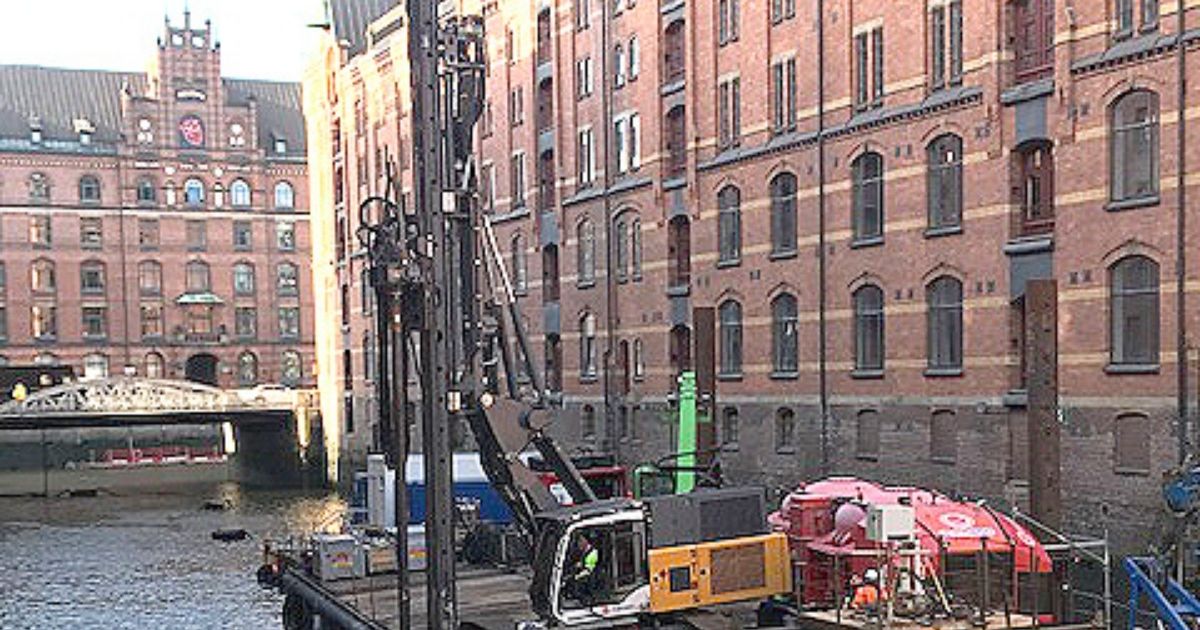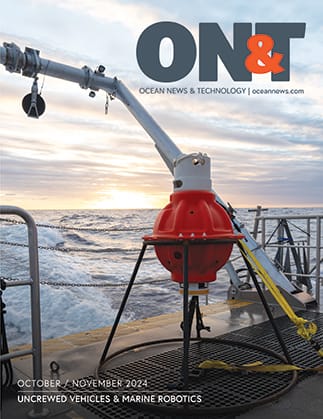As of 2015, the world’s largest complex of warehouses, Speicherstadt Hamburg (warehouse city, Hamburg), is a UNESCO World Heritage Site. Speicherstadt’s beautiful neo-gothic red-brick architecture and winding network of streets, fleets and bridges erected into the Elbe river is an ‘extraordinary example of representing the value of trade in Hamburg during its foundation.
The Speicherstadt, built between 1885 and 1927, rests on thousands of oak poles that have deteriorated over time due to a slow advancing bacterial decomposition and indentation of the fleet bed as a result of an expanded tide difference. Renovation work is necessary to prevent the poles from sinking towards the fleets, including bed reconstruction arrangements raising the fleet bed by 0.5 to 1.5m and supply of bearing sand. Furthermore, the bed is stabilized with cement.
 Working in the fleets: Dennis Wolf, B.Sc. Software Engineer & Service Assistant
Working in the fleets: Dennis Wolf, B.Sc. Software Engineer & Service Assistant
Incorporating these measures – a process ranging from Fall 2020 to Summer 2021 – necessitates an accompanying water quality monitoring, especially controlling and remedying any impacts on the water quality caused by the cement placement.
For this purpose, nine EXO1 Multiparameter Sondes from US manufacturer YSI are placed in different locations close to the ground on the existing fleet poles. The EXO 1 Sonde measures temperature, conductivity, pH value, dissolved oxygen content and turbidity every 5 minutes over several days and time sequences. The sondes feature internal data storage and power supply for autonomous operating.
 MacArtney Germany was commissioned to take on the supply of the multiparameter sondes, including a measurement and service concept for the project and all planning plus execution of the water quality measuring. This involves regular calibration and maintenance of the sondes in the in-house workshop, data provision and installation and de-installation of the sondes on-site.
MacArtney Germany was commissioned to take on the supply of the multiparameter sondes, including a measurement and service concept for the project and all planning plus execution of the water quality measuring. This involves regular calibration and maintenance of the sondes in the in-house workshop, data provision and installation and de-installation of the sondes on-site.
Working in the fleets requires flexibility and swiftness. The environment is tide dependent, generating relatively short time windows following the water level. The water quality measurements were conducted throughout the renovation work, with brief interruptions for calibration, processing and data evaluation.

